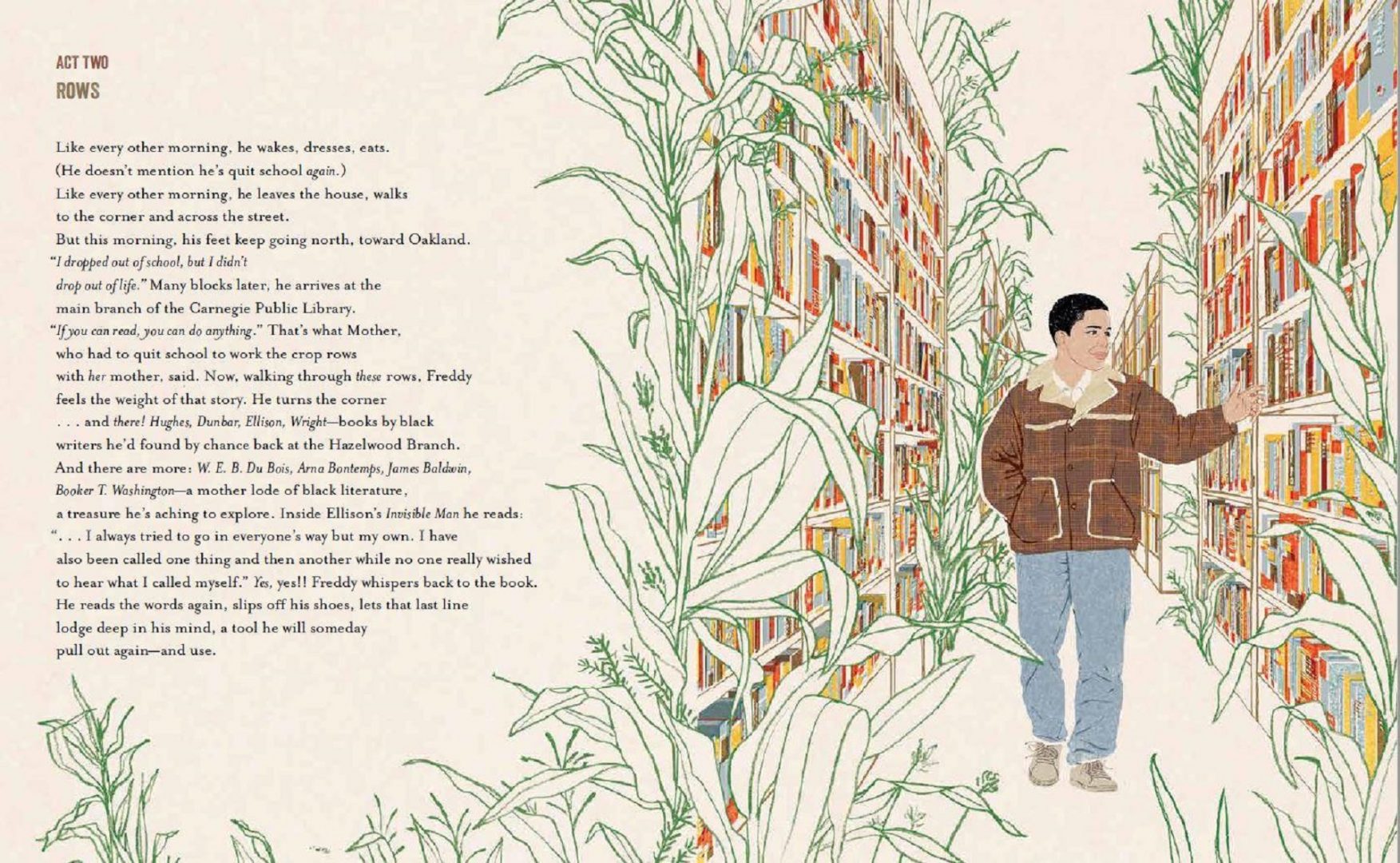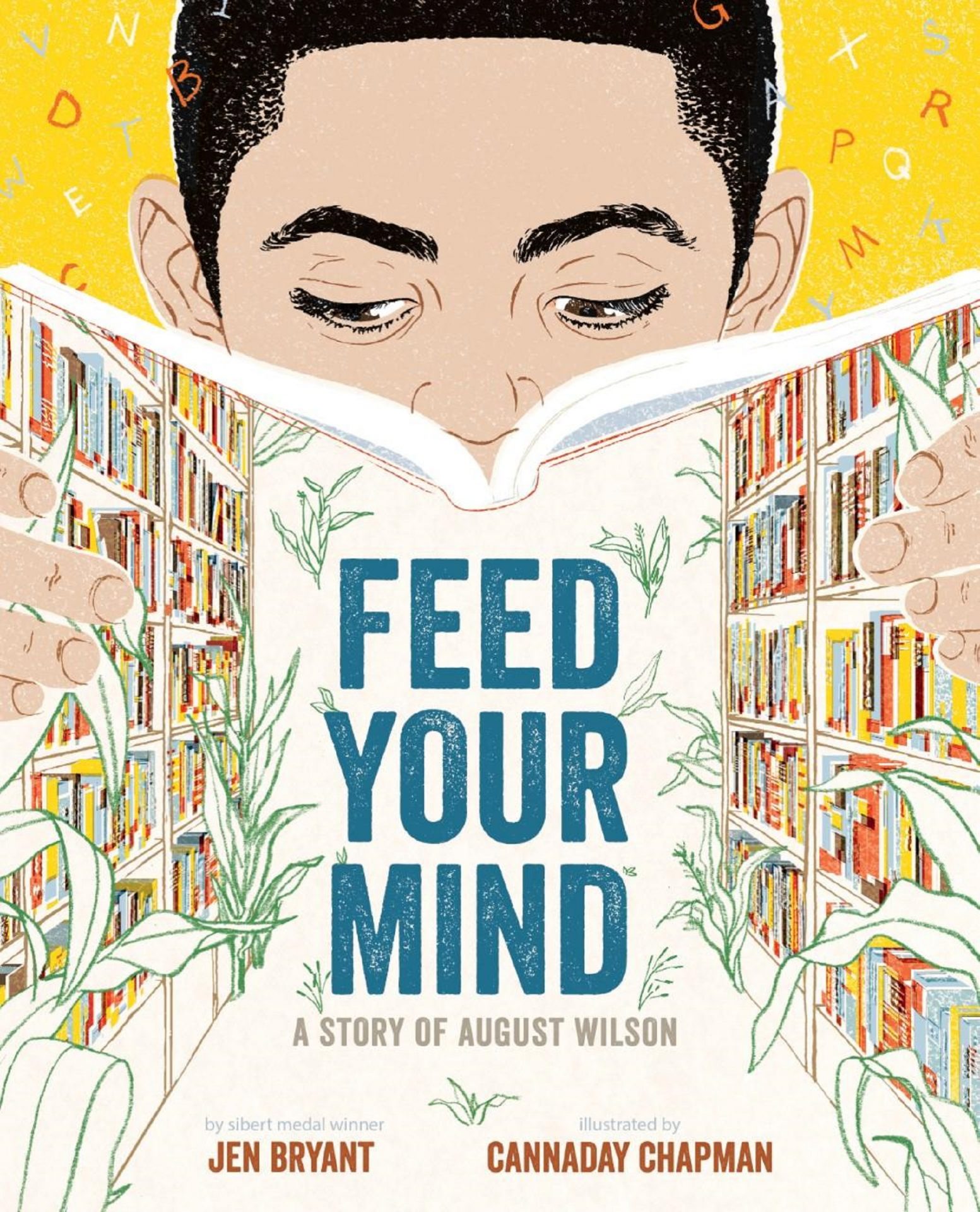
A young August Wilson visits the Carnegie Library in "Feed Your Mind," a book by Jen Bryant, and illustrated by Canaday Chapman.
Courtesy of Abrams Books

A young August Wilson visits the Carnegie Library in "Feed Your Mind," a book by Jen Bryant, and illustrated by Canaday Chapman.
Courtesy of Abrams Books

Courtesy of Abrams Books
A young August Wilson visits the Carnegie Library in "Feed Your Mind," a book by Jen Bryant, and illustrated by Canaday Chapman.
(Pittsburgh) — August Wilson wrote plays for adults. But Jen Bryant says the story of Wilson’s own life is important for children to hear.
Bryant, based in Malvern, Pa., is a poet and the author of picture books about historical figures from artists Horace Pippin and Georgia O’Keefe to poet William Carlos Williams. Her latest is “Feed Your Mind: A Story of August Wilson” (Abrams Books for Young Readers). She grew interested in Wilson a few years ago after seeing his plays “Seven Guitars” and “Fences” staged at a local theater.

Courtesy of Abrams Books
“Feed Your Mind: A Story of August Wilson” focuses on August Wilson’s childhood and early life.
“The language was just so lyrical and the characters were so wonderful,” she said. “Unlike anything I’d ever seen or heard before. I was just captivated.”
Bryant — whose book on Williams with illustrator Melissa Sweet, “River of Words,” won the Caldecott Honor — researched Wilson’s childhood in the Hill District in the 1940s and ’50s. His experience encompassed both the embrace of the community and the harshness of living in a racist society: Wilson, famously, dropped out of Central Catholic High School because of racist bullying by classmates, and then left public high school because a teacher refused to believe he had written his carefully researched, footnoted essay on Napoleon.
At 16, Wilson began visiting the Carnegie Library’s main branch, in Oakland, every day and reading whatever he could find – a key step toward him becoming one of Pittsburgh’s most famous native sons, and one of the nation’s most celebrated playwrights.
“He reads with delight and with a fearsome hunger, like a guest at a royal feast, the table so wide, so vast — all he can do is try to taste a bit of everything,” writes Bryant. Her text sits amidst a two-page drawing by the book’s illustrator, Cannaday Chapman, who fancifully depicts the young Wilson seated in an ornate, wing-backed chair at a library table set with a candelabra, and books stacked in tiered cylinders, like a wedding cake. (“Feed Your Mind” is the first book for Chapman, whose illustration credits include The New York Times and the cover of the New Yorker.)
Bryant was impressed by Wilson’s single-mindedness. “[That] made me think, ‘This is a great story for kids,’ because you have the authentic journey,” she said. “You have a young man that could have done a lot of other things with his time, and ended up self-educating himself at the Carnegie Library. That was a trail I wanted to follow.”
The book draws its title, and some material, from “Feed Your Mind, The Rest Will Follow,” the headline of the Pittsburgh Post-Gazette’s op-ed reprint of Wilson’s 1999 speech marking the centennial of the Carnegie Library’s Hill District branch. It was the same branch where he obtained his first library card in 1950.
Bryant also depicts Wilson’s early poetry career; his first attempts at writing plays; his move, in the 1970s, to Minneapolis; and his first successes on stage, with “Jitney” and “Ma Rainey’s Black Bottom.”
The book concludes in the mid-1980s, with Wilson not yet 40. He would die in 2005, but not before completing his 10-play Century Cycle exploring African-American life in the 20th century. Wilson won two Pulitzer Prizes for Drama, and gained international acclaim and acolytes ranging from Pittsburgh Playwrights Theatre Co. founder Mark Clayton Southers to Hollywood stars like Phylicia Rashad and Denzel Washington.
Bryant emphasizes that Wilson’s ear was as important as his pen. Wilson was an inveterate eavesdropper, in spaces like neighborhood diners. As a fledgling playwright in Pittsburgh, he asked his friend Rob Penny how to make characters talk. “You don’t – you listen to them,” Penny told him. On scraps of paper, Wilson wrote scraps of overheard talk that often worked its way into his plays.
“That’s genius, when someone can dig down and just sort of recycle and reuse and find all kinds of huge gold nuggets in the soil from which they come,” Bryant said. “And he certainly was that kind of artist.”
She wants Wilson’s story to get young readers making art about their surroundings.
“I’m really hopeful kids will get engaged and enthused about his journey, and again maybe taking him as a model, and looking around their own community, and maybe getting inspired to write about it,” she said.
The days of journalism’s one-way street of simply producing stories for the public have long been over. Now, it’s time to find better ways to interact with you and ensure we meet your high standards of what a credible media organization should be.